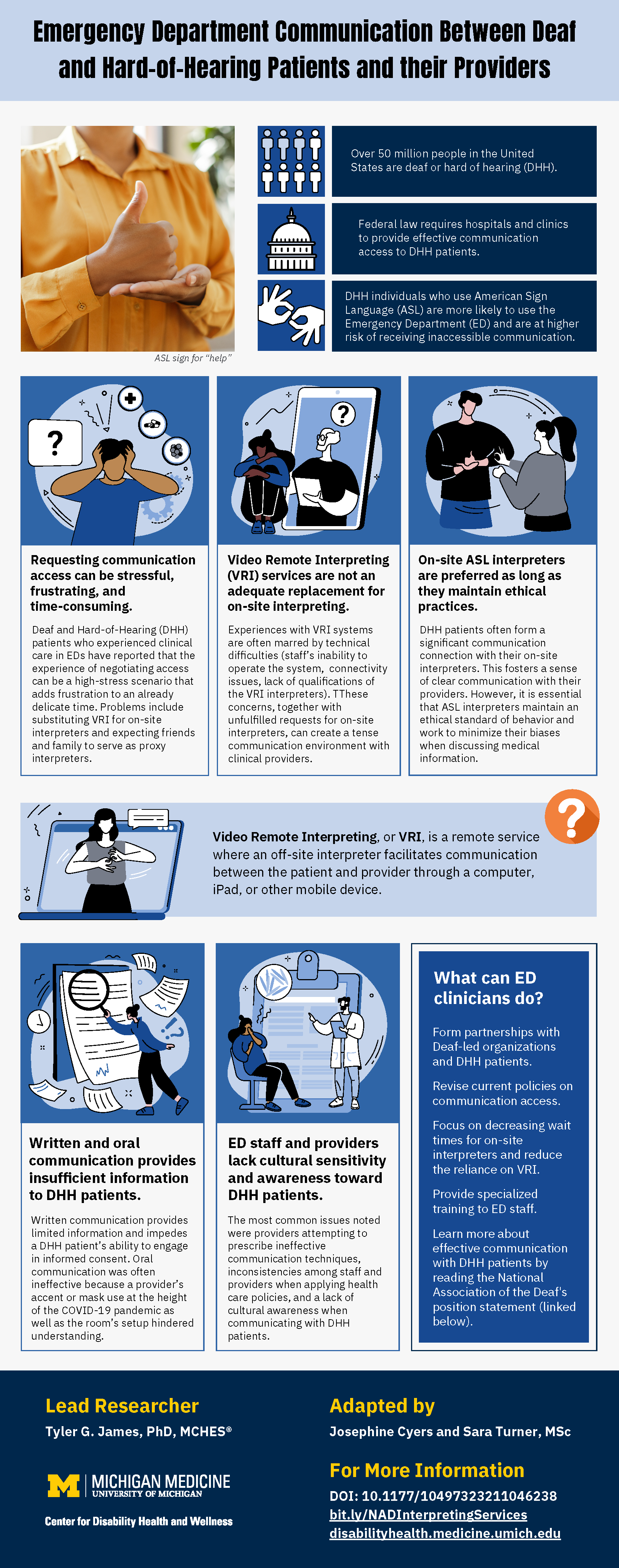Emergency Department Communication Between Deaf and Hard-of-Hearing Patients and Their Providers
Researchers at the University of Michigan conducted a qualitative study to evaluate the experiences of Deaf people who use American Sign Language (ASL).
Although health care systems have a legal and ethical responsibility to respect a patient’s ability to communicate, Deaf patients often report that communication can be inaccessible and ineffective. Deaf people who use American Sign Language (ASL) are more likely to use the emergency department (ED) than their English-speaking hearing counterparts. They are also at a higher risk of receiving inaccessible communication. Researchers at the University of Michigan conducted a qualitative study to evaluate their experiences. They found that loss of communication systematically diminished the ability of research participants to engage in shared decision-making about their medical care, increased the likelihood of delaying health care when needed in the future, and impeded efforts to improve health care navigation and self-advocacy.
We have summarized their findings in the infographic below.

View the infographic as a PDF.
For more information: James, T. G., Coady, K. A., Stacciarini, J. R., McKee, M. M., Phillips, D. G., Maruca, D., & Cheong, J. (2022). "They're not willing to accommodate Deaf patients": Communication experiences of Deaf American Sign Language users in the emergency department. Qualitative Health Research, 32(1), 48–63. https://doi.org/10.1177/10497323211046238
